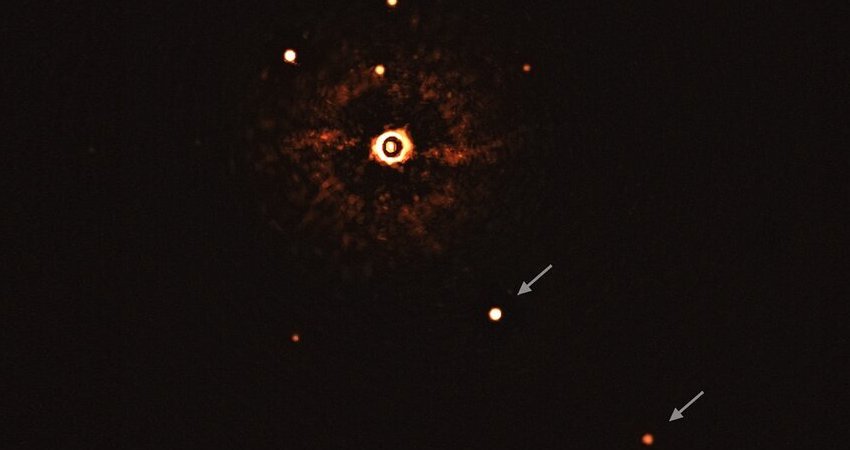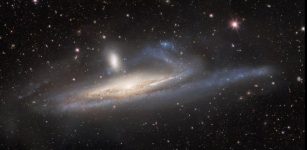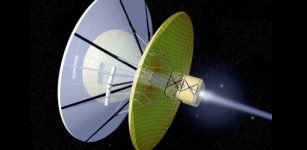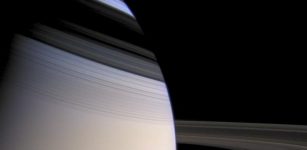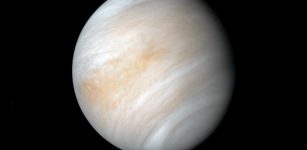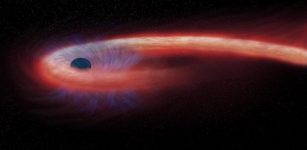First-Ever Image Of A Sun-Like Star Accompanied By Two Exoplanets – Captured
Eddie Gonzales Jr. – MessageToEagle.com – The European Southern Observatory’s Very Large Telescope (ESO’s VLT) has taken the first-ever image of a young, sun-like star accompanied by two giant exoplanets.
This image, captured by the SPHERE instrument on ESO’s Very Large Telescope, shows the star TYC 8998-760-1 accompanied by two giant exoplanets, TYC 8998-760-1b and TYC 8998-760-1c. This is the first time astronomers have directly observed more than one planet orbiting a star similar to the Sun. The image was captured by blocking the light from the young, Sun-like star (on the top left corner) using a coronagraph, which allows for the fainter planets to be detected. The bright and dark rings we see on the star’s image are optical artifacts. The two planets are visible as two bright dots in the center and bottom right of the frame. Credit: ESO/Bohn et al.
A planetary system around a star like our sun, is located about 300 light-years away and known as TYC 8998-760-1.
“This discovery is a snapshot of an environment that is very similar to our solar system, but at a much earlier stage of its evolution,” says Alexander Bohn, a Ph.D. student at Leiden University in the Netherlands, who led the new research published today in the Astrophysical Journal Letters.
“Even though astronomers have indirectly detected thousands of planets in our galaxy, only a tiny fraction of these exoplanets have been directly imaged,” says co-author Matthew Kenworthy, Associate Professor at Leiden University, adding that “direct observations are important in the search for environments that can support life.”
The new ESO’s VLT image is the first direct image of more than one exoplanet around a sun-like star. ESO’s VLT was also the first telescope to directly image an exoplanet, back in 2004, when it captured a speck of light around a brown dwarf, a type of ‘failed’ star.
The two gas giants orbit their host star at distances of 160 and about 320 times the Earth-sun distance. This places these planets much further away from their star than Jupiter or Saturn, also two gas giants, are from the sun; they lie at only five and 10 times the Earth-sun distance, respectively.
The team also found the two exoplanets are much heavier than the ones in our solar system, the inner planet having 14 times Jupiter’s mass and the outer one six times.
Bohn’s team imaged this system during their search for young, giant planets around stars like our sun but far younger. The star TYC 8998-760-1 is just 17 million years old and located in the southern constellation of Musca (The Fly). Bohn describes it as a “very young version of our own sun.”
Further observations of this system, including with the future ESO Extremely Large Telescope (ELT), will help to test whether these planets formed at their current location distant from the star or migrated from elsewhere. ESO’s ELT will also help probe the interaction between two young planets in the same system.
“The possibility that future instruments, such as those available on the ELT, will be able to detect even lower-mass planets around this star marks an important milestone in understanding multi-planet systems, with potential implications for the history of our own solar system,” Bohn concludes.
Written by Eddie Gonzales Jr. – MessageToEagle.com Staff

